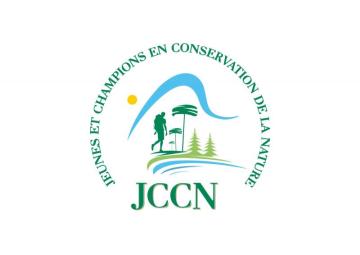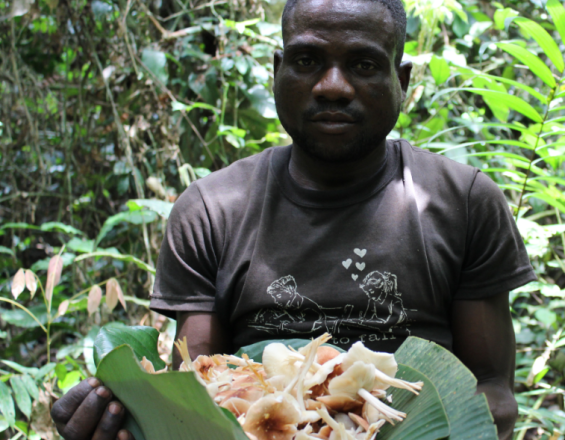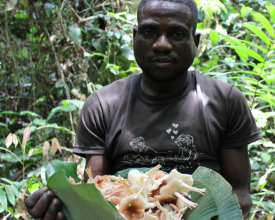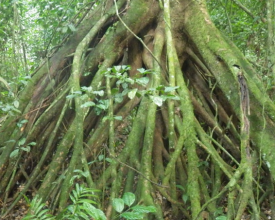
The Yoko forest reserve and the challenges of biodiversity conservation

The Yoko forest reserve is located in present-day Tshopo province, between 0° 15' and 0° 20' north latitude, 25° 14' and 25° 20' east longitude, 32 km southeast of the town of Kisangani, in the Ubundu territory. It is crossed by the Yoko River, which divides it into two parts: the northern block of the reserve with 3,370 hectares, and the southern block with 3,605 hectares, for a total area of 6,975 hectares. The Yoko forest reserve is owned by the Congolese state. In view of its form of public governance, sealed by scientific collaboration with the Faculty of Sciences of the University of Kisangani, the Yoko reserve is expected to contribute to the promotion of scientific research and in situ biodiversity conservation.
Context
Challenges addressed
In terms of the challenges facing the managers of the Yoko reserve, it is worth noting that the Yoko forest reserve is faced with slash-and-burn agriculture and cases of land disputes between local communities. Illegal logging and uncontrolled hunting have also been reported.
Location
Process
Summary of the process
The Yoko forest reserve enjoys a form of public governance entrusted to the Coordination Provinciale de l'Environnement et du Développement Durable de la Tshopo. However, the Coordination had entrusted the site to the Faculty of Sciences of the University of Kisangani, for scientific research purposes. The Faculty set up permanent plots to monitor vegetation dynamics and regularly organizes biodiversity inventories.
Building Blocks
Public governance entrusted to the Provincial Coordination of Environment and Sustainable Development
The reserve is governed by the Provincial Coordination for the Environment and Sustainable Development.
Enabling factors
The reserve is directly controlled by the government through the Provincial Coordination of Environment and Sustainable Development.
Lesson learned
Unfortunately, changes in the authorities at the level of the Provincial Coordination of the Environment are causing problems for the continuity of the site's management policy.
A collaboration with the Faculty of Science at the University of Kisangani
Conservation of the forest blocks and scientific research in the reserve has been entrusted to the Faculty of Science at the University of Kisangani.
Enabling factors
Success factors include the installation of permanent plots for monitoring forest dynamics, the construction of a camp site for researchers, etc.
Lesson learned
The permanent plots that have been set up have made it possible to conserve large forest blocks. Organized research also provides jobs for local people, who act as field guides and camp site managers.
Impacts
In terms of social impact, it should be noted that local community members also receive payments for services rendered when accompanying research teams in the field. Community members' rights of access to NTFPs are also recognized. The reserve's mode of governance, which is a form of public governance sealed by a scientific collaboration with the Faculty of Sciences of the University of Kisangani, has not enabled the riparian communities to find a space for cultural and spiritual expression. Nevertheless, the Bakumu community, for example, maintains several taboos and prohibitions on certain natural resources as part of its traditional way of life.
Beneficiaries
Beneficiaries include environmental coordinators, local community members, technical and financial partners, researchers, members of civil society, environmental activists and others.
Sustainable Development Goals
Story
The Yoko Forest Reserve is located in present-day Tshopo province, between 0° 15' and 0° 20' north latitude, 25° 14' and 25° 20' east longitude, 32 km southeast of the town of Kisangani, in the Ubundu territory. The reserve is bounded to the north by the town of Kisangani and the disturbed forests bordering the commune of Lubunga, to the south and east by the Biaro river and to the west by the railroad line and the road along which it extends from kilometre points 21 to 38. It is crossed by the Yoko River, which divides it into two parts: the northern block of the reserve with 3,370 hectares, and the southern block with 3,605 hectares, for a total area of 6,975 hectares. The Yoko Forest Reserve is owned by the Congolese government. The reserve also benefits from public governance, sealed by scientific collaboration with the Faculty of Science at the University of Kisangani.
The Yoko forest reserve is a pluristrate forest with a canopy overhung by tall tree species that can reach heights of over 40 m. Emerging trees are dominated by terra firma species such as Gilbertiodendron dewevrei, Scorodophloeus zenkeri, Petersianthus macrocarpus and Irvingia grandifolia. Large clumps of rotang are found in the middle of large Marantaceae clearings. Species frequently found in the undergrowth include Diospyros, Cola brunelli, Scaphopetalum thoneri and Microdesmis yafungana. The mixed forest and dense adult forest are sparsely covered with Marantaceae and rotang glades. The fauna consists mainly of small rodents, amphibians, reptiles and so on. Non-timber forest products are generally medicinal and food plants, Marantaceae leaves, rotangs and caterpillars. The Yoko forest also abounds in a wide variety of edible saprotrophic and ectomycorrhizal fungi found associated with tree species of the Uapaca genus. Unfortunately, the reserve faces a number of pressures and threats. The main pressure facing the Yoko Forest Reserve is slash-and-burn agriculture. In the reserve's outlying villages, there are also land conflicts between communities. Cases of illegal felling of trees have also been reported.




